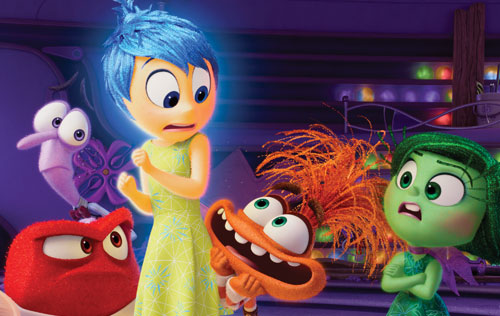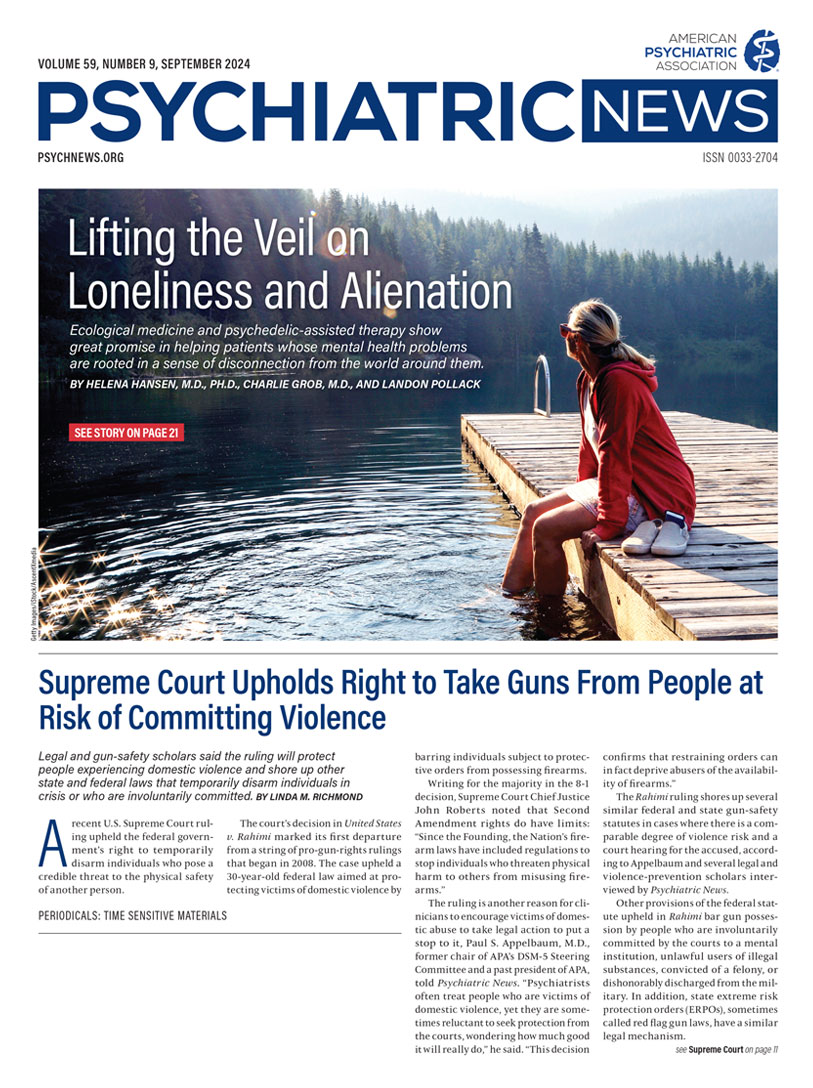As the animated Disney Pixar movie “Inside Out 2” opens, the protagonist, a girl named Riley, is 13 years old. A decade ago, the first “Inside Out” movie traced Riley’s physical and emotional development from birth to age 12.
Both films depict emotions as characters living inside Riley’s mind, where they influence and sometimes outright control her feelings via a special console. In the first “Inside Out,” there were five emotions: Joy, Anger, Fear, Disgust, and Sadness.” The sequel, which finds Riley entering adolescence, adds four more: Anxiety, Envy, Embarrassment, and Ennui.
In one of the opening scenes of “Inside Out 2,” Joy—the predominant emotion throughout Riley’s happy childhood—wonders about a big, new, red console button labeled “Puberty,” remarking: “It’s probably not important.” But suddenly, the button starts flashing and emitting a shrieking alarm, and a huge wrecking ball swings into Riley’s mind, knocking Joy aside. And thus puberty—and its attendant range of disruptive emotions—enters Riley’s life.
Key among these new emotions is Anxiety, which is depicted as a hyperactive, bright-orange, oblong-headed character. Anxiety explains that, while Fear protected Riley from immediate danger, Anxiety is there to try and anticipate everything that might happen—and it is Anxiety that becomes the predominant force in Riley’s adolescent mind as the movie unfolds.
Healthy and Unhealthy Anxiety
When the first “Inside Out” came out, it was immediately embraced as a tool for fostering dialogue, according to Willough Jenkins, M.D., a consultation-liaison psychiatrist at Rady Children’s Hospital in San Diego and a general outpatient psychiatrist for a pediatric practice. “It was a huge topic in our office, and it was a tool we used a lot at the time,” Jenkins said. While the focus of the first movie was on the psychological development of children, she noted, it is very helpful to now shift to the emotional development of adolescents.
Pixar’s key consultant for the new film was psychologist Lisa Damour, Ph.D., a fellow at Yale’s Edward Ziegler Center in Child Development and Social Policy, who discussed the movie in a recent podcast called “The Making of Inside Out 2.” The movie’s director, Kelsey Mann, had already settled on Anxiety as the driving force in Riley’s adolescent emotional life when he consulted Damour, the author of the books “Under Pressure: Confronting the Epidemic of Stress and Anxiety in Girls” and “Untangled: Guiding Teenage Girls Through the Seven Transitions Into Adulthood.”
Damour told Mann that Anxiety has both healthy and unhealthy forms—it can be both protective and destructive—and this is reflected in the film, in which “all of these emotions, that are not particularly comfortable to experience, are treated as essential” for Riley’s overall emotional development. “This is exactly what we need to be talking about right now,” Damour added, “and it is not where we are as a culture.”
A critical part of “Inside Out 2” is how the emergence of new emotions in teenagers destabilizes both the teens and their families. In one scene, for example, Riley inexplicably becomes furious with her mother—at which point the movie cuts to the inside of Riley’s mind, where Anger, Sadness, and Disgust are pushing buttons on the emotions console, each saying: “I barely touched it.” “It’s such a perfect capturing of what we know about the amplification of emotion” in adolescence, Damour said.
Indeed, the transition from childhood to adolescence has always been challenging. “This has always been true of teenagers, and somehow we have lost the thread on this,” Damour said. “And too often, parents are looking at normally developing teenagers and wondering what’s wrong with their kid.”
Something to Talk About
In Jenkins’ practice, “Inside Out 2” has become a “huge topic in a really wonderful way” with patients who have seen it. It provides metaphors for emotions that otherwise can be very difficult and abstract—even for adults—and creates an easy way to connect and speak about them. “The movie has been a gift by giving us these tools to communicate,” Jenkins said.
Jenkins often works with seriously ill children and adolescents—for example, those dealing with cancer. Some of these patients have the additional challenge of undergoing the transition to adolescence while confronting a major medical illness. But whatever they are going through—a major medical illness, family stress, concerns related to their own identity or sexuality—“most children are very layered.” Having a movie that contextualizes all the emotions they are experiencing is invaluable.
“One of the biggest messages the movie gave that I really appreciate is that there are no bad emotions,” Jenkins said. “Showing that it’s OK to express all your emotions … and that all your emotions have a role is very, very helpful for children and teenagers to see.” Psychiatrists often work with kids and families that are experiencing serious, complicated situations, and thus may be encountering emotions that are outside the bounds of typical development. Even so, said Jenkins, “Inside Out 2” can be very helpful. She advises parents to see the movie with their kids and then talk about it. Parents have told her “that things they thought their child would know, they haven’t.”
Thoughts, Feelings, and Actions
Leslie Miller, M.D., is the director of the Mood Disorders in Adolescents and Young Adults Program at the Johns Hopkins Children’s Center and an assistant professor at the Johns Hopkins University School of Medicine. Miller and a colleague—social worker Stacey Schulman, M.S.W., who works in the outpatient child psychiatry unit at Johns Hopkins Bayview Medical Center—jointly responded to questions from Psychiatric News about using “Inside Out 2” as a therapeutic tool.
Miller and Schulman said that depicting emotions as characters can help their patients connect with their own feelings in a non-threatening manner. “Talking about emotions in reference to characters provides both examples of how these emotions can influence one’s thoughts, feelings, and behaviors and serve as a jumping off point for them to talk about their own experiences,” they said. For therapists looking to the movie as a tool, it “provided some good examples of cognitive-behavioral therapy and how our thoughts, feelings, and actions influence each other.”
The release of “Inside Out 2” has been greeted with enthusiasm especially by younger teens, according to Miller and Schulman. “Many of them have talked about how they identify with Anxiety in particular,” they said. “This has allowed us to have conversations around the interplay between thoughts, feelings, and behaviors. This discourse also allows for a discussion about how anxiety can be helpful—but can also interfere if left unchecked.”
The movie serves as a helpful reminder that all emotions are important, and that there are no good or bad ones. The ultimate lesson: “The important thing to remember is how we respond to our emotions,” Miller and Schulman said. Referencing “Inside Out 2” can help both therapist and patient highlight examples of the impact of emotions that, in turn, can facilitate a deeper discussion.
And the ending of the movie, in which Anxiety steps back from its controlling role, “showed how skills can be used effectively to manage anxiety,” Miller and Schulman said, “to make it productive rather than destructive.” ■

